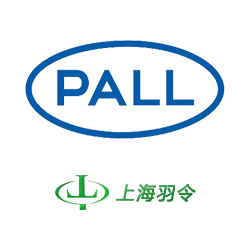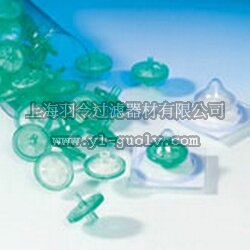
Rapid, High Capacity Protein Purification
in a User-Friendly Format
- Patented Ceramic HyperD® ion exchange chromatography sorbent features “gel-in-a-shell” technology, providing rapid protein purification with high capacity and good resolution.
- Rapid and efficient.Obtains high speed runs (1 - 4 mL/min) with very little loss in binding capacity and resolution, allowing more samples to be processed per day.
- Higher resolution for 1 mL columns.Columns provide distinct separation of proteins for better purification.
- Luer lock inlet and outlet allows convenient use with syringe, pump, or automated chromatography system.
- User-friendly column design is colorcoded and labeled by chemistry type.层析柱采用六边形轴环,可避免意外滚落实验台。

- Screen multiple IEX chemistries for use in protein purification
- Ideal for optimization studies of protein purification schemes using small sample volumes prior to scale-up
- Efficient and reliable small scale purification of proteins for structural, functional, and yield analysis
材料成分
- Column Housing, Cap, Plug, and Adapter:聚丙烯
- Column Frit:聚乙烯
| 介质 | 功能和作用 | Color Code | Average Particle Size | Working pH | Ion Exchange Capacity1 |
| CM Ceramic HyperD F | Weak cation exchanger | 绿色 | 50 微米 | 2 - 12 | > 60 mg/mL2 |
| DEAE Ceramic HyperD F | Weak anion exchanger | 橙色 | 50 微米 | 2 - 12 | > 85 mg/mL3 |
| Q 陶瓷 HyperD F | Strong anion exchanger | 红色 | 50 微米 | 2 - 12 | > 85 mg/mL3 |
| S Ceramic HyperD F | Strong cation exchanger | 天蓝色 | 50 微米 | 2 - 12 | > 75 mg/mL4 |
Column Geometry
- Column Volume:1.04 毫升
- Bed Height:1.48 cm (0.58 in.)
- Bed Diameter:0.94 cm (0.37 in.)
Device Dimensions
- 直径:1.6 cm (0.6 in.)
- Length (Without Plugs):4.8 cm (1.9 in.)
Connections
- Inlet:Threaded female luer lock
- Outlet:Rotating male luer locking hub
Recommended Flow Rates
- 1 - 4 mL/min
Back Pressure
- Maximum:3 bar (300 kPa, 43.5 psi)
存储
- 2-30 ºC (36-86 ºF)
- 2-8 ºC (36-46 ºF) after opening
1Dynamic binding capacity (DBC) determined at 10% breakthrough, 200 cm/hr. with 1.66 mL sorbent packed in a column of 5 mm ID and 100 mm height using the following:
25 mg/mL human IgG in 50 mM sodium acetate buffer, 100 mM NaCl, pH 4.7
35 mg/mL BSA in 50 mM Tris-HCl buffer, pH 8.6
45 mg/mL lysozyme in 50 mM sodium acetate buffer, pH 4.5
Resolution Comparison of AcroSep™ Columns With Q HyperD® F and Competitive Q at Flow Rate of 1 mL/min

Resolution was calculated using default algorithm on AKTA♦ chromatography system.
The chromatogram above is an illustration of resolution between BSA and Conalbumin using three replicates of 颇尔's AcroSep Q column and a competitive Q column.This separation was run at 1 mL/min.Resolution of the AcroSep columns is clearly illustrated in this chromatogram.The competitive column is represented by the green line.
Resolution Comparison of AcroSep Columns With Q HyperD F and Competitive Q at Flow Rate of 4 mL/min

The above chromatogram is an illustration of the resolution of the AcroSep Q column and the competitive column when the flow rate is elevated to 4 mL/min.It demonstrates that at 4 mL/min there is little, if any, change in protein separation on the AcroSep column, while the competitor performance degrades significantly with increased flow rate.
1 mL AcroSep Column Average Dynamic Binding Capacity at High Flow Rate (10% Breakthrough)

The above illustrates dynamic binding capacity for each of our four ion exchange chemistries when run at 3.56 mL/min.Data shows higher dynamic binding capacities of 颇尔 AcroSep columns over competitive columns at higher flow rates.Each average is derived from three replicates of > 8 AcroSep columns or three replicates of two competitive columns.The proteins were at a concentration of 5 mg/mL and the choices were BSA for Q and DEAE, Lysozyme for S, and IgG for CM.









